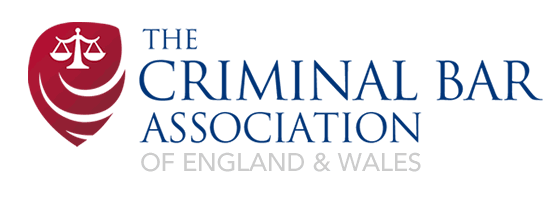Monday Message 09.11.20
Chair’s Update:
James Mulholland QC

On Saturday the US Presidential race was declared in favour of Joe Biden and Kamala Harris became the first woman to be named Vice President elect. The fact that she is a person of colour elected to the second highest office is also a first. With women having the vote for, barely, 100 years and those of colour only becoming fully emancipated in every state, barely 55 years ago, it is a reminder that lack of diversity is still a significant issue in society. In the most recent MOJ statistics on diversity of the judiciary, as of 1st April 2020, women remain under-represented with only 32% as court judges in England and Wales even though in the 2011 census they made up 51% of the population.
8% of judges were from BAME backgrounds. Whilst the latest data does not provide a breakdown of the overall percentage of black court judges in office the 2019 figures showed this to be 1.1%; one third of the number from this background in the overall population. There is still much work to do to ensure the judiciary is more representative of society.
On Thursday afternoon, whilst attention remained focussed on the undecided US election, after four tumultuous years and with the Black Lives Matters movement one of two major global issues, the Judicial Office published its “Judicial Diversity and Inclusion Strategy 2020 – 2025”. This vital strategy is the fruit of, at least, seven years of work, since the formation in 2013 of the Diversity Committee of the Judges’ Council.
The importance of having a diverse judiciary in social, gender and ethnicity terms was made clear by the Chair of the Judicial Diversity Forum, Lady Justice Simler who said, “[a]t a time when events both here and abroad have highlighted experiences of unfair discrimination, prejudice and disadvantage, I am more committed than ever to having a judiciary in which a stronger culture of inclusion and collaboration is fostered and maintained. Where the best legal professionals from a range of backgrounds, cultures and experiences are recruited at all levels, and are supported, encouraged and retained.”
The CBA has made it clear for many years that if society is to have a vibrant, independent judiciary within the criminal courts, it must sustain a criminal legal profession which contains the best talent from a very broad spectrum of society. It has long been stated that “the criminal bar provides the rich life-blood of tomorrow’s judiciary.” Stemming that lifeblood is causing the judiciary to become, incapable of fulfilling its proper role on behalf of us all.
The current insistence by the Ministry of Justice to push through Extended Operating Hours (EoH) across the Crown Court estate, in the face of repeated warnings of discrimination from the very profession expected to populate those courts, will only continue to undermine hard won progress over the last 25 years whereby increasing numbers of women were encouraged to join and to stay in the profession.
There has been an ongoing problem of disproportionate numbers of women leaving the criminal bar mid-career long before Covid, influenced by extremely poor rates of pay, ever increasing travel demands and a much longer working day.
The Western Circuit Women’s Forum report, published in October 2019, made it clear that, almost two thirds of those who left the bar on that circuit over a six year period were women. It continued, [t]he vast majority of the women who left did not become judges or retire, but apparently left midcareer. Most of the women who left cited the difficulty of balancing work and family commitments as a factor in their decision”. A recent Women in Criminal Law survey revealed 88% against EoH arrangements with only 3.9% in favour.
Women from minority ethnic backgrounds are facing particular difficulties. Figures published last week by the Bar Standards Board reveal them to be the lowest paid group at the bar.
Lady Justice Simler continued that, although representation of judges from BAME backgrounds had increased, “progress in this regard is too slow and there is still a long way to go to realise a judiciary that fully reflects the society it serves”. There is clearly a significant chasm between the judiciary and both those for whom it acts, and, those over whom, it passes judgement. It is important to bear in mind the results of the Lammy Review in which it was found that black people are four times more likely to be in prison than would be expected given their proportion of the population.
The jury system remains a vital guardian of justice in this area. The random selection of a group of twelve is essential because it is more likely proportionately to reflect the diverse, multi ethnic society in which we live and that is why lowering jury numbers to seven, as was done during the second World War, could never, realistically, have been considered, even as a short term measure during the pandemic, because of its, almost inevitable, discriminatory effect. In those times, the ethnic composition of the nation was intrinsically different and such a reduction had little impact on overall fairness. Now, a level of diversity could be fundamental to understanding the evidence of complainant, witness or defendant and to ensuring that a fair trial is seen to take place for all.
While the Lammy Review found there to be issues of discrimination across many levels of the Criminal Justice System, it regarded juries as a beacon of diversity describing them as, “a success story”. It said the jury may be “centuries old, but it is still fit for purpose today”. It concluded that, “one stage in the criminal justice system where B[A]ME groups do not face persistent disproportionality is when a jury reaches a verdict.”
As the judiciary embarks on a five year mission to improve the diversity of its membership, it is all the more important, to those in prison and complainants both waiting ever longer periods for trials to take place, that they are able to rely on this fundamental tenet of our system of justice.
While he awaited the US election contest to be called, Joe Biden on Friday echoed President Abraham Lincoln in his speeches, talking about the election of presidents being “by the people, for the people”. The same can be said of a jury system which has outlasted despots and defined us as a nation; where the reputations and liberty of ordinary people are decided not by an elite but by one’s peers of ordinary men and women. It is justice by the people and, if not directly for the people, then, at least, on their behalf.
The Lord Chief Justice in his foreword to the new Judicial Strategy stated, “[r]ecruitment to the judiciary should come from the most talented in all parts of the legal profession, not only those in private practice but also those working in the public sector…” However, there is a significant risk that by the time this strategy comes into effect, the talent pool from which one seeks to draw tomorrow’s judges will have disappeared.
Encouraging applicants from less privileged backgrounds to come to the criminal bar continues to be a challenge. Rates for criminal legal aid are at rock-bottom and many, already burdened with significant debt from student loans, will remain deterred. Initiatives such as Extended Operating Hours only add to the sense of a beleaguered profession. If any progress is to be made, it is essential that government no longer seeks to dictate terms to the criminal bar but works with it in a partnership of equals. Both the judiciary and the public will ultimately suffer if this cannot be achieved.
View more news